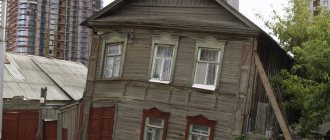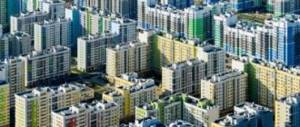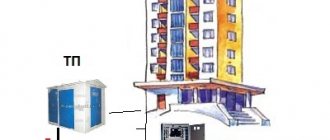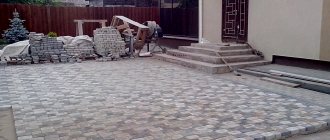12/06/2017 | The Ministry of Construction indicated the person responsible for street (yard) lighting.
The Ministry of Construction of Russia, by letter dated September 18, 2020 No. 33418-ACh/04, clarified who and from what funds should bear the costs of organizing street (yard) lighting.
The letter explained that an exhaustive list of property constituting common property in an apartment building is established by the Rules for the maintenance of common property in an apartment building, approved by Decree of the Government of the Russian Federation dated August 13, 2006 No. 491. External lighting networks of the local area are not included in the specified list. The current legislation does not contain the obligation of owners of premises in apartment buildings to bear the costs of street (yard) lighting.
At the same time, in accordance with the Federal Law of October 6, 2013 No. 131-FZ “On the General Principles of the Organization of Local Self-Government in the Russian Federation,” issues of local importance of an urban, rural settlement, urban district include the organization of improvement of the territory of an urban, rural settlement, urban district, in including street lighting. Financial obligations arising in connection with the resolution of issues of local importance are fulfilled at the expense of local budgets (with the exception of subventions provided to local budgets from the federal budget and budgets of constituent entities of the Russian Federation).
Thus, according to the Ministry of Construction of Russia, the organization and repair of street (yard) lighting falls within the competence of local governments.
Who pays for lighting the local area and what legislation regulates such payment?
Who pays for lighting the local area of an apartment building and what legislation regulates such payment?
Lawyers' answers (1)
Simon, hello! According to Art. 36 of the Housing Code of the Russian Federation, the owners of an apartment building own:
a plot of land on which an apartment building is located and the boundaries of which are determined on the basis of state cadastral registration data, with elements of landscaping and landscaping;
other facilities intended for the maintenance, operation and improvement of an apartment building, including transformer substations, heating points intended to serve one apartment building, collective parking lots, garages, children's and sports grounds located within the boundaries of the land plot on which the apartment building is located
In accordance with Art. 30 Residential complex owners bear the burden of maintaining the common property of a residential building
From the above articles of the law it follows that if lighting is installed in the local area belonging to the owners of the house, then they are obliged to pay for the lighting. If lighting (lamps, poles, power lines) is located outside the land plot of the home owners, then the owners are not required to pay for electricity. energy.
Good luck! Your feedback on the consultation is important to me.
Best regards, Victor Bogachenkov
Drawing up a complaint
An appeal to the municipality must be made in simple written form. The applicant can be one citizen or several (in the latter case we are talking about a collective complaint).
In the text of the appeal, it is important to indicate the following questions to the local administration:
- what organization is engaged in servicing lamps in a certain area;
- who is the customer under the contract concluded with this organization;
- who is responsible for maintaining lighting at the proper level in a particular location.
The text of the complaint must indicate a request to take appropriate measures to correct the problem with street lighting. In addition, it is worth referring to paragraph 4, paragraph 14 of Article No. 131 of the Federal Law, according to which issues of energy supply to a populated area are the responsibility of the local administration.
You can make a complaint yourself using the standard template presented on the website, or order it from a specialist (the latter’s services are provided on a paid basis).
The law does not impose clear requirements for the text of the appeal, however, the document must contain certain information in order to be accepted for consideration.
If there is no light on the street in front of an apartment building or on a street with several private houses, experts recommend filing a collective complaint. This way, residents will have a better chance of getting the issue resolved as quickly as possible.
Useful information: Where to complain if the yards are not cleaned?
What should be the lighting of the local area of apartment buildings?
- The Housing Code of the Russian Federation states that residents of city houses with a large number of apartments are required to pay expenses that go towards maintaining common property, including street lighting systems, in proportion to their share in the common property right. This means that it is no longer just the municipality that pays for street lighting;
The law (for example, the Housing Code, etc.) states that external and internal lighting of urban infrastructures (apartment buildings, local areas, etc.) must be based in their organization on certain norms and requirements. All standards established for urban house plots of land are prescribed, as for internal premises, in SNiP. Here, first of all, in the issue of organizing street lighting, the role is played by the level of illumination.
At whose expense should it be done?
In accordance with the Housing Code, all costs for maintaining the common property of the house are divided between the owners in proportion to the area of their apartments, and since the adjacent territory belongs to joint property, payment for street light falls on the shoulders of the owners. Costs for street lighting are calculated using a common building meter and are included monthly in the residents' receipts.
Reference! If it is not documented that the territory around the house belongs to common property, the inclusion of such a line of expenses in the payment receipts is unlawful and can serve as the beginning of legal proceedings.
Returning home in the dark is much more pleasant and safer in the illuminated courtyard than getting to your own apartment in the dark, flinching at every rustle. The lack of light in the yard is a reason to contact the management company or administration.
PRO new building (Moscow)
Every person wants to live in optimal and high-quality conditions, therefore he provides safe and comfortable conditions. All people who live in a high-rise building should be aware of their rights. Lighting fixtures must be installed in the entrances, and if they are missing or not functioning for any reason, the management company is obliged to repair or replace the light bulbs.
- lighting should be located in each entrance of the house, and a high-quality lighting device should be installed above the entrance door;
- such a number of lamps are selected along the roadway so that the light from them is not lower than the optimal level of illumination;
- illumination is certainly done not only for roads, but also for sidewalks and playgrounds;
- the higher the lantern is located, the more power the light bulb in it should have;
- Special lamp posts are installed along the roadway, and several lamps can be installed on them, so with one such element it is possible to illuminate not only the road, but even the playground.
Standards and requirements
Construction norms and rules SNiP SN 541-82 should ensure better functioning of lamps and other street lighting devices, efficiency and safety of their operation, as well as maintenance. But, nevertheless, today in many courtyards the lights are not lit completely or only a few units are partially lit, and sometimes the installation of a new lighting system in a newly built area is endlessly postponed.
Street lighting requirements
To be able to defend your rights, you should know how street lighting should be equipped and how it works. Basic provisions of building codes and regulations:
- Illumination of architectural objects and monuments is a mandatory measure when organizing a street lighting system;
- Lighting of main and secondary roads is carried out taking into account the type of road surface and its reflective properties;
- Each object provides a certain level of horizontal illumination, for example, for highways this parameter corresponds to 20 lux, regional roads are illuminated within 15 lux, and for local streets 4-6 lux are sufficient.
In addition, special requirements were formulated for the degree of protection of the lampshade, since on large highways the dust level is very high. For example, if the traffic volume on the road exceeds 2,000 vehicles per hour, then the lamp must have a protection rating of IP54.
There are rules for arranging supporting structures for street lighting lamps. They can be made of metal, reinforced concrete, wood, polymer materials, however, the first type of support is the most preferred today. Such pillars are characterized by a gradual narrowing in the upper part of the structure, which provides increased resistance to gusts of wind.
Street lighting poles are installed taking into account a number of rules regarding their distance from the road curb. The higher the degree of traffic intensity, the farther the lamp should be installed from the edge of the road: for highways this distance corresponds to 1 m, for secondary roads - 0.6 m, and for roads where trucks do not pass, street lights are installed at a distance of 0 .3 m from the curb.
As for maintenance, regularly scheduled and unscheduled inspections of the condition of street lighting in the territory entrusted to them must be carried out by performing services and enterprises. In addition, commissions are appointed to monitor the work of these services. If manual control of the lighting system is expected, a schedule for turning the lighting on and off must be drawn up. Lines must also be checked.
The LED lighting system is most preferable, since in addition to tangible energy savings, there is also no need for frequent maintenance due to the reliability of lighting devices and their long-term operation.
There is no lighting of courtyards and surrounding areas
Hello. On the adjacent territory of the house there are 3 lamps, which were connected directly to the house and these costs for electricity were included in the utility services of the residents of this house as “general house needs”. After citizens contacted the 004 service about the legality of such a connection, the lights were turned off as they were illegally connected. Now, for a month now, the surrounding area and the nearby playground have not been lit at all. The management organization and the municipality ignore the collective appeals of the building's residents about this. In our entire “town,” the lighting of courtyards and streets is carried out either at the expense of the residents (the lights hang on the house, the wires go to a common meter in the entrance), or there is simply no lighting!
The common property includes a land plot on which an apartment building is located and the boundaries of which are determined on the basis of state cadastral registration data, with elements of landscaping and landscaping, as well as other objects intended for the maintenance, operation and improvement of one apartment building, including transformer substations, heating points, collective parking lots, garages, children's and sports grounds located within the boundaries of the land plot on which the apartment building is located.
Lighting standards
Lighting standards for the local area of an apartment building are established in accordance with, namely:
- there must be at least 6 suites at the entrance to the building;
- there must be at least 4 suites on the pedestrian path leading to the building;
- main passages running in microdistricts should be illuminated at 4 lux;
- secondary passages, as well as courtyards and various utility areas should be illuminated within 2 lux.
In addition, there are pre-designed lighting options. They provide for a specific placement of lighting fixtures and their corresponding type. The options are as follows:
When residents are faced with the task of designing lighting for their yard, in addition to the financial component, they must take into account such factors as the resistance of the lanterns to hooligans and protection from falling icicles in the winter.
Whatever option the citizens living in the house choose, they must first of all be guided by the lighting standards that are adopted in Russia.
They were invented for a reason, and failure to comply with them can result not only in liability before the law, but also in some human casualties.
Who is responsible for lighting courtyards and local areas?
It’s night... it’s dark outside... you live in an apartment building and you’re returning home... all the lights near the house are on. In this case, no one thinks that organizing and maintaining street lighting near entrances and local areas is not such a simple matter. To do this, you need to install supports, connect power lines, screw in light bulbs and change them as they burn out or disappear due to theft.
It is clear that the management company is not able to fully organize the work to ensure the functioning of the adjoining and intra-house electrical systems, so the management company enters into an agreement with the electricity supply organization. Replacement of lanterns (light bulbs) can be carried out by residents themselves or by employees of the management company.
Types of outdoor lighting lamps and advantages of LED lamps
Various lamps are used in street lighting:
- mercury;
- sodium;
- metal halide lamps;
- LED
In recent years, more and more city streets are filled with LED lights. A number of undeniable advantages of lamps of this type allow zealous and wise officials to turn a blind eye to the rather high cost. Distinctive features of LED street fixtures are:
- durability;
- strength;
- high resistance to vibration, humidity, temperature changes, dust;
- efficiency;
- emission of even and bright light that does not blind drivers and pedestrians.
The importance and necessity of street lighting on poles is undeniable: for road safety, for the convenience of pedestrians, for a feeling of security and comfort in the dark.
If the city's streetlights are partially non-functional or there is no lighting system at all, for example, in new residential areas or in areas located on the outskirts, then you can try to solve this problem by contacting the relevant authorities. However, you will have to be patient, since such issues are not resolved instantly. In addition, you need to know exactly where to complain and in what form.
No light in the yard: where to complain
What if there is no light in the yard at all? What to do? Who should understand the current situation? It seemed that the answer was simple - write a complaint to the district administration and involve housing and communal services in the problem. However, how can you ensure that your complaint not only reaches the administration, but also receives an appropriate response?
But this applies to public areas. Is the yard considered a public area? According to the decrees on the norms and rules for the improvement of urban districts of most constituent entities of the Russian Federation, public areas include territories to which an unlimited number of people have access, that is, these are the territories of parks, gardens, squares and boulevards.
Is it possible to file a complaint through the Criminal Code?
The management company is responsible for ensuring proper lighting in the local area, so if there are problems with the lights near the house, it is possible to submit a statement or complaint to the management company.
Residents have the right to draw up a collective appeal by submitting it in writing in any form, and it is important to indicate the full name of each citizen, his personal signature and the address of the apartment in which he lives.
For greater clarity, it is possible to attach printed photographs of the unlit area to the application.
The period for consideration of the application is up to seven working days, after which the management company is obliged to send a written response to the applicants. If it is established that the energy supplying organization provides services of inadequate quality, the company management will independently contact the administration or the city power grid.
Who is responsible for street lighting? 1 (20%)
Residents of modern cities quite often face a complete or partial lack of street lighting. This issue is especially relevant in the winter and transitional periods of the year. Non-working lights impair visibility in the yard, which can be dangerous for residents and passers-by.
To find a solution in this situation, consider who is responsible for street lighting in the city and where to complain in this case. A city dweller, armed with the necessary information, will be able to react correctly if there is no light on the street and contact the appropriate authority to solve the problem.
Lighting of courtyard areas - whose headache is it?
Responsibilities for retrieving data from a public meter are assigned to the management organization and are carried out in the presence of the head of the housing council or his deputy. The company supplying electricity, for its part, can request data from the meters at any time. Homeowners are prohibited from blocking access to collective electricity meters to employees of an energy-saving company and management company employees.
The most effective and economical solution for yard lighting is automatic lighting control using an astronomical relay. This equipment has a program that regulates the switching on/off of lighting lamps depending on sunrise/sunset. She herself adjusts the operation of the yard lighting according to the annual cycle of daylight hours, depending on the season and regional location.
Who legally pays for lighting the local area of an apartment building?
Some residents insist on installing lighting fixtures with motion sensors in order to save energy. It makes sense to install such lamps inside entrances, whereas on the streets they will not work quite correctly. On the street, the sensor can be triggered by the movement of an animal, and the light will turn on when it is not required.
Who pays for the lighting of the courtyard and entrances of an apartment building? According to the Federal Law, the area around the house, like the entrances, is common property. The costs of lighting and troubleshooting are borne directly by the building occupants. Moreover, the costs are divided for each owner depending on the area of his apartment.
Types of pillars and rules for their installation
To provide a sufficient level of light to the maximum area, it is necessary to install the lamps at a certain height. For this purpose, special supports are used - pillars, which are made of various materials:
- Tree. Coniferous wood is used for lighting fixtures. Such poles are inexpensive, light in weight and easy to install. They are also quite safe in emergency situations. The disadvantages include their fragility, they require special treatment against rotting and do not have a good appearance.
- Concrete. The supports are low cost. They are easy to use and quite durable. The disadvantages of the structures are their rough appearance and fear of the proximity of groundwater.
- Reinforced concrete. Posts of this type are durable, not sensitive to corrosion, and inexpensive. Disadvantages: high cost of installation and maintenance during operation. The appearance is the same as that of concrete supports.
- Metal (steel or aluminum). Such supports are durable, strong, stable and quite decorative. Disadvantages include high cost and the need for periodic painting.
When installing lighting poles, due consideration must be given to the foundation..
When installing on a lawn, the depth must be at least 80 cm. For other types of installation of poles, immersion in the ground must be done to a depth of 160 cm.
Other requirements include the following standards:
- the distance between supports is at least 60 cm;
- lining up pillars in one row;
- lining up in two rows with a rectangular or checkerboard pattern.
The distance of the devices from the road curb depends on the traffic intensity:
- roads on which freight transport does not travel – 0.3 m;
- secondary roads – 0.6 m;
- highways – 1 m.
Who is responsible for street lighting in the city?
Many rural residents are interested in whether there is any standard according to which light is supplied to rural areas? After all, often, lanterns are installed, but the light appears in them very rarely, so, in fact, they perform no more than a decorative role, and even then it’s a stretch.
The original idea was not so bad, because owning an enterprise is the dream of any villager, but without proper government support this idea quickly stalled. It is clear that people starting their own farms on vast territories provided them with the necessary electrification, but all this was for the time being. So it turns out that huge debts for electricity began to form, which were not possible to repay. The procedure for transferring these lands and communications into municipal ownership is a real “bureaucratic swamp” in which not everyone wants to participate. Therefore, it turns out that numerous rural streets have been without electricity for many years.
Lighting of an apartment building - standards and who is responsible for it
Finding yourself late in the evening in a dark courtyard or entrance to your home, you feel, to put it mildly, uncomfortable. Immediately two thoughts flash through my head: “I wish I could run home as quickly as possible” and “Who is generally responsible for lighting the apartment building and the yard?” The answers to the second question can be found in this article.
Every apartment owner needs to know that in addition to residential square meters, he also owns, by right of shared ownership, part of the local area and all non-residential property located on it (playgrounds, parking lots, lawns, as well as barriers, lamps, landings, electrical panels, elevator shafts).
What does this concept include?
Lighting of the local area is the illumination of individual areas located on it at night, namely:
driveways and sidewalks;- parking and access roads;
- children's playgrounds and walking paths;
- economic sites.
Each area must be illuminated in accordance with the standards established in SNIP.
The choice of lighting devices is made by the responsible organization at its own discretion; usually these are lanterns and facade lighting with anti-vandal protection.








